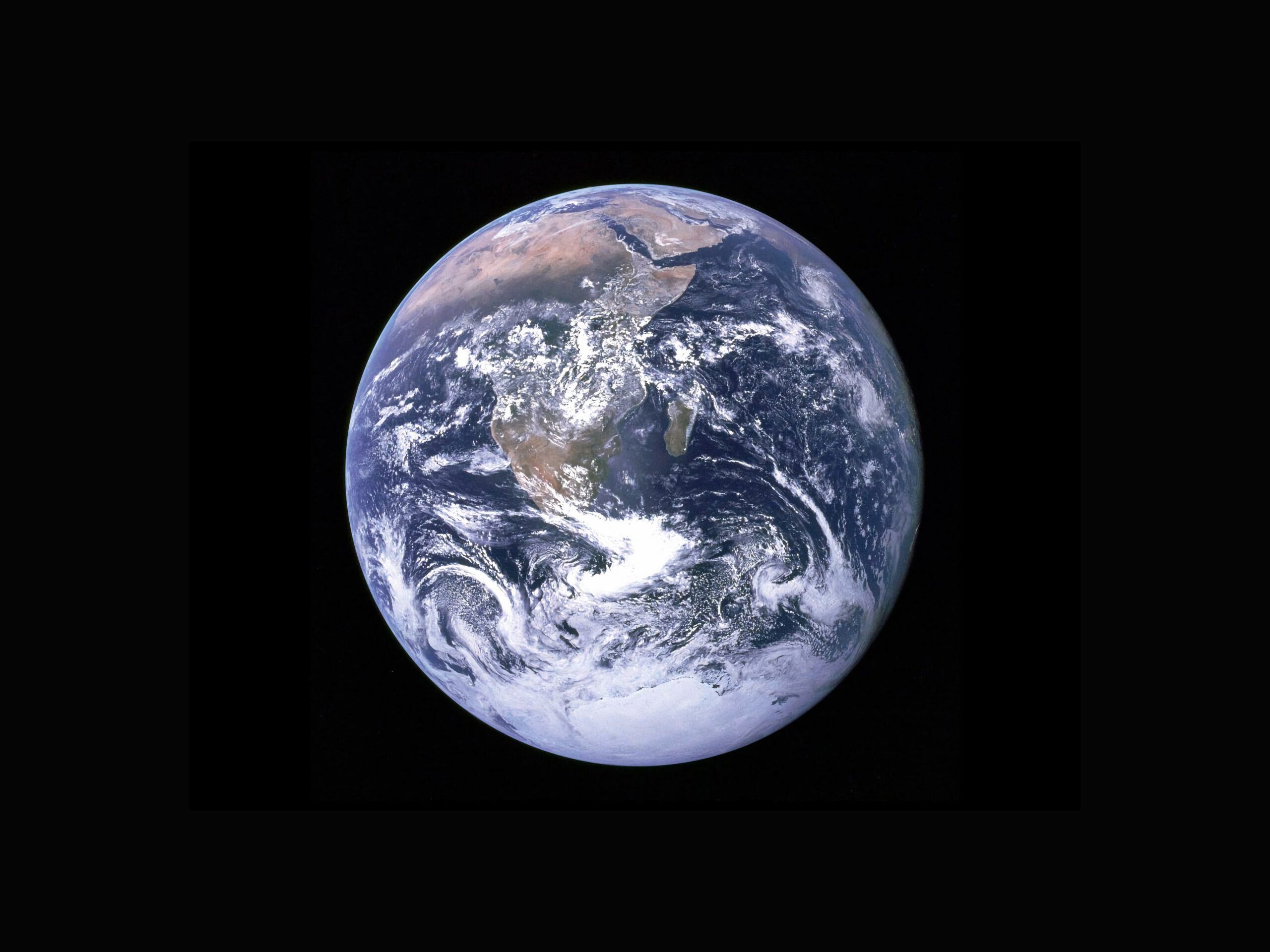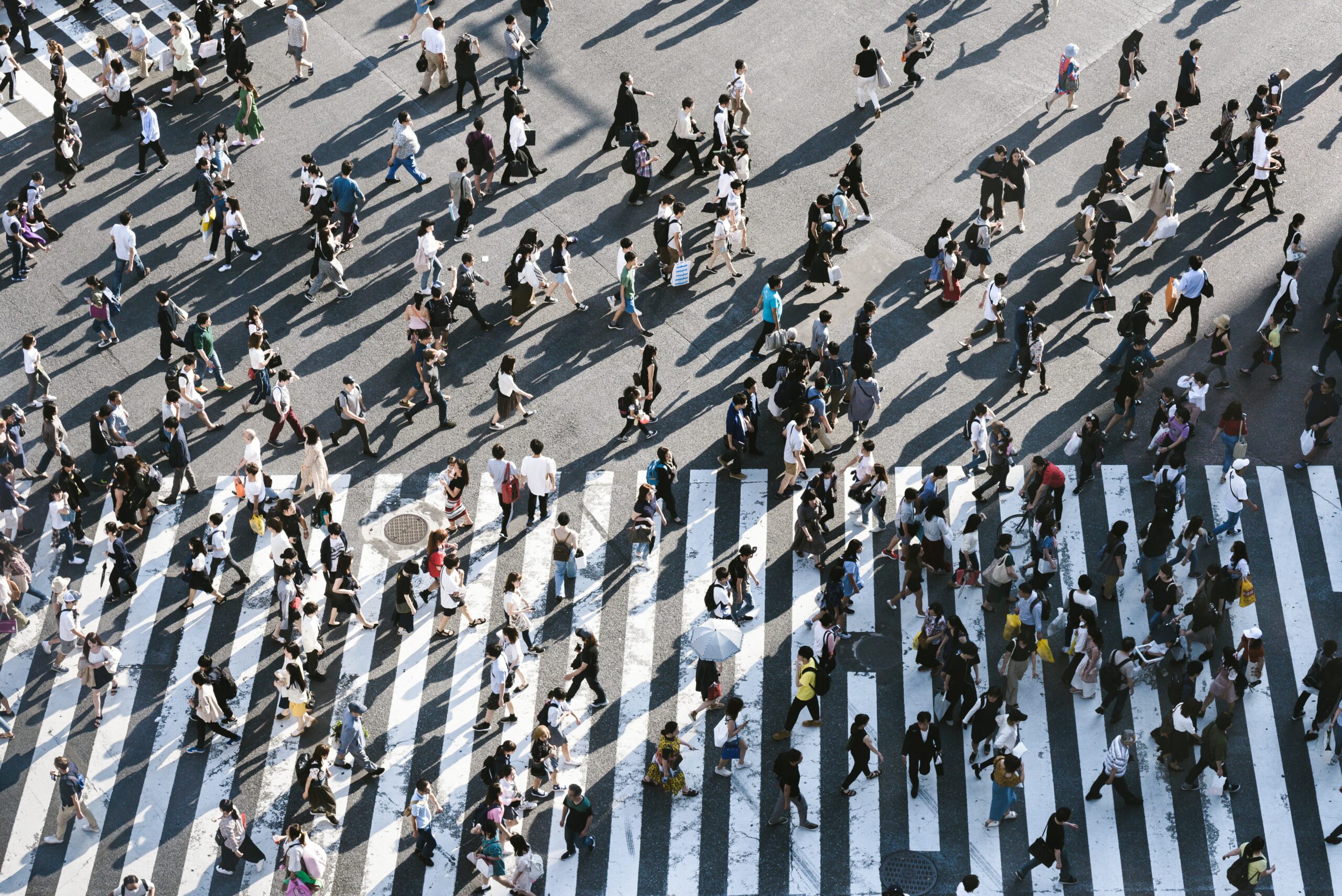What about: trends & challenges
Learning to deal with global megatrends
A few important statements in advance: No one can predict the future. Nor can we predict the development of trends and challenges, or their complexity and contradictory nature as social phenomena. What is possible, however, is individual preparation for developments that are already taking effect in the present and may become the norm in the future. And: those who actively deal with the available data today and recognise where certain trends are heading can better prepare themselves for different developments. As a communications and change consultancy, Culture Shifts constantly explores current trends and challenges, generates understandings in different sectors and communicates them to clients. In doing so, we take into account the underlying complexity of the issues.
In this article, we give a brief overview of selected megatrends and their countermovements that are changing our world and how we live and work in it. In addition, we provide – based on our current expertise – initial instructions for action for individual scenarios.

©NASA
Globalisation and climate change
Our world is growing ever closer together economically – at the same time, political tensions are increasing. Sometimes there are considerable differences in the way people look at the world. The advanced globalisation, which is currently declining slightly due to international conflicts, harbours both opportunities and risks. One thing is clear: globalisation often turns regional problems into geopolitical challenges.
Globalisation often turns regional problems into geopolitical challenges.
An example of a comparatively well understood global development is the worldwide population growth, despite the declining birth rate in some countries. By 2030, there will be about one billion more people on earth simply due to the fact that people are living longer. The world population could reach 8.5 billion by 2030. The fastest growing population group will be the elderly. According to UN estimates, the peak will be reached in 2100 – with a population of 11 billion people. The combination of higher life expectancy, better health and declining birth rates will lead to massive changes in demography. Societies and their consumption demands are changing accordingly – with consequences for shaping future business decisions that are difficult to predict.
Another relevant aspect is the increasing consumption of resources, which in turn is closely linked to one of the biggest problems and challenges of our time: climate change is already causing catastrophic destruction in ecosystems and cultures as well as social discord in terms of social justice. The seemingly simple but nevertheless challenging response can only be to strive for sustainability today and to rethink economic systems and consumption patterns in order to achieve a beneficial balance between human activities and the environment.
Strive for sustainability today and rethink economic systems and consumption patterns in order to achieve a beneficial balance between human activities and the environment.
Changes in society
Since the worldwide Corona pandemic and the accompanying lockdowns and closures of public and private institutions and offices, the relationship between private and public has been put to the test and redefined. New Work is the hybrid of digital and analogue working worlds. The work and life attitude meant by this can lead to a pluralisation of forms of life and work and allow more leisure and development opportunities for individuals. However, as we now know, New Work also leads to problems such as burnout and the loss of healthy boundaries for many people.
In the course of the shift in the world of work, there has been a worldwide movement from cities to rural areas. And yet, it has been clear for a long time that our cities are becoming more crowded and dense, that urbanisation is occurring in a way that last happened at the beginning of the Industrial Revolution in the early 20th century. In the future, urban areas will be much larger, more complex and more interconnected than they are today, and about two-thirds of all people will live in them.
Wherever people exist, one basic need that remains constant despite all technological and cultural innovations is interpersonal contact with each other: the world is networked and anyone can potentially contact anyone. Our communication currently takes place on the common major platforms, which offers new opportunities for exchange and education. However, due to political and social developments, or preferences, there will always be micro-platforms and communication channels for individual groups. The phenomenon of filter bubbles, effective at least in virtual space, will continue to accompany us; radicalisation and social “division” remain real challenges. Algorithms document and guide our online behaviour to decide what we see and consume. It is important to note here: Uncertainty and complexity apply especially to developments in society. High sensitivity and attention are required to derive instructions for action from them for the economy.

©Ryoji Iwata for unsplash
Economy & Resources
The ongoing digitalisation of society is leading to new peer-to-peer processes and value creation in decentralised networks based on “flat hierarchies” and collaboration. Both work on a local as well as on a global level. Other buzzwords currently in vogue are blockchain and the Internet of Things: we no longer communicate only digitally, but all monetary transactions are increasingly networked, with corresponding cultural and economic consequences. A paradox: new technologies promote transparency in individual transactions, such as payment transactions or the conclusion of contracts. Nevertheless, there is a danger that manipulation or monopolisation will leave the power in the hands of individual actors.
Another development is that of growing income and wealth disparities. While global inequality between countries has decreased, it is increasing within many countries. More and more wealth is concentrated in the hands of fewer and fewer people: At the end of 2020, for example, 1.1 percent of the world’s population owned 45.8 percent of the world’s wealth. Analogous to wealth, a (negative) concentration can also be seen in resources: Due to growing resource scarcity, bottlenecks and supply chain difficulties are increasing. In order to be able to continue to provide the quantities of important raw materials such as water and metals in line with the economic growth that continues to be propagated, the world will not be able to avoid developing alternative circular models: Calls for recycling and remanufacturing of products will become louder, common understandings of materials management will be reconsidered.
From trend to action
As mentioned at the beginning, it is impossible to predict the future and develop final instructions for action for companies or institutions. Rather, it is important to establish a flexible mindset and a prudently oriented entrepreneurial practice to be able to make sensible decisions in the present. This is one of the reasons why Culture Shifts offers a differentiated survey and evaluation of topics and agenda items, based on trends and challenges. We develop tools and strategies for future scenarios that are likely to occur. One insight is that companies today need to take a proactive role in the areas of sustainability, social justice and transparency and establish a correspondingly reflective attitude.
We also see that previously prioritised goals such as revenue growth are merging into a more comprehensive portfolio of goals that are more aligned with societal discourses and the individual expectations of, for example, workers. It should not be forgotten that people are still central to value creation. Even if changes through the use of digital technologies and software are already clearly noticeable, (inter)human aspects and qualities in particular must be further developed in the sense of a strong corporate culture. Culture and people as foundations are a priority, technology as a means follows.
Culture and people as foundations are a priority, technology as a means follows.
In this context, it is also necessary to listen to the voices of new generations and to include them in internal and external company discourses, if not to follow their discourses. Despite an ageing society, by 2030 over 50% of people working in companies will be from Generation Z or Millenials. Whether they live in the countryside or in cities, whether they communicate in isolated networks or on large social platforms, whether their understanding of work is a fundamentally different one: companies should pave the way for them today and provide resources to develop their ideas together with them and ultimately also to enforce them. One thing is certain: the world is waiting for new visions, which in turn are the basis for a new change.